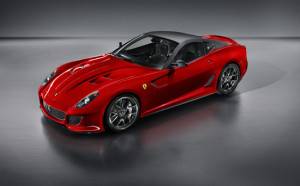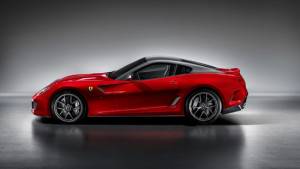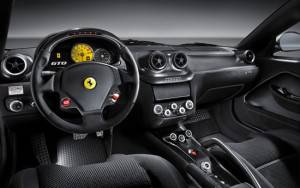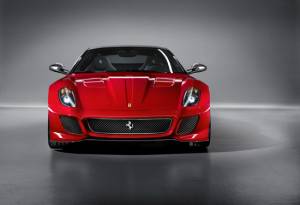The faithful were assembled in the historic Italian edifice; 500 tastemakers, trendsetters and recognized luminaries of the automotive gentry, gathered in the Ducal Palace, an ornate 17th century baroque court that has served as the officer training center of the Italian Military Academy since 1862, and lives on as one of Modena’s spiritual hearts. But strangely enough, none of the distinguished guests stood a chance of acquiring the main attraction that had drawn their presence on the night of April 14. Like most of us, all they could do was admire the spectacular, red aluminum-skinned Prancing Horse that emerged proudly bearing three timeless initials…GTO.
Of all the alpha-numeric abbreviations that float around in the greater automotive lexicon, few draw as unanimous a reaction of admiration and respect as GTO. So inspiring is the lore surrounding the moniker that it has been used no less than five times in various models over the last 50 years. Though American car lovers will surely connote the term with the recent and short lived Holden-produced Pontiac, or the original 1960s Pontiac muscle car that inspired it, both of those cars blatantly co-opted their names from the 1962 Ferrari 250 GTO.
To bring the uninitiated up to speed, Gran Turismo (or Grand Touring) cars had been around for some time when Ferrari chose to re-work their popular 250 GT for improved racing performance. Under FIA rules, manufacturers had to homologate a proposed racecar, essentially meaning that a pre-requisite number of roadgoing examples had to be produced to qualify the car for competition. Famed designer Giotto Bizzarini redesigned the 250 GT’s body with the assistance of a windtunnel, resulting in a sleek looker that was christened the 250 GTO, the “O” standing for Omologato (Italian for homologated). Ironically, Ferrari never produced the 100 roadcars necessary to satisfy the homologation rule, though that didn’t stop the GTO from winning three consecutive Manufacturer’s World Championships.
Now generally considered to be one of the most sensational sports car designs of all time, a cachet that is amplified by the model’s racing success and paucity of production (only 39 examples), the 250 GTO has reached an echelon of desirability that rarely sees it change hands, a transaction that would easily result in a $5 to $10 million sale price in today’s auction market. The car’s status as a recognized cultural icon was cemented in 2005 with its inclusion in the Boston Museum of Fine Art’s exhibit of Ralph Lauren’s cars. But other than a brief resuscitation in the 1980s that saw the name applied to a 308-derived supercar called the 288 GTO, Ferrari has kept its classic moniker dormant over the years…until now.
On April 14, Ferrari officially unveiled to the public the 599 GTO, the third evolution in the nameplate’s rich tradition. Visually rooted in the company’s current 599 GTB Fiorano, the new GTO has received considerable technological input from the development of the 599XX experimental track car. Ferrari claims the 599 GTO is the company’s fastest road car ever, accelerating from 0 – 62 mph in 3.35 seconds with a top speed in excess of 208 mph. Such gaudy numbers have been achieved through weight saving measures like thinner gauge aluminum body panels and thinner glass, as well as a host of re-designed scoops and intakes. A new crankshaft and 60 millisecond shift times also contribute to the GTO’s blast-off of a sprint. Though the new car’s 12-cylinder engine shares the Fiorano’s 5,999 cc displacement, its 599XX-derived improvements have resulted in 58 more horses for a total of 670 brake horsepower.
“We’ve created a wonderful car, the most powerful in our history, an exclusive car I wanted to give a historical name like GTO, because it deserves it,” said Ferrari Chairman Luca di Montezemolo in a prepared statement. With plans to produce only 599 examples of the new GTO, all of which have already been sold, the word exclusive can hardly be considered an exaggeration. The 599 GTO will get a wider public introduction later this week when Ferrari presents the car at the International Automotive Exhibition in Beijing.























